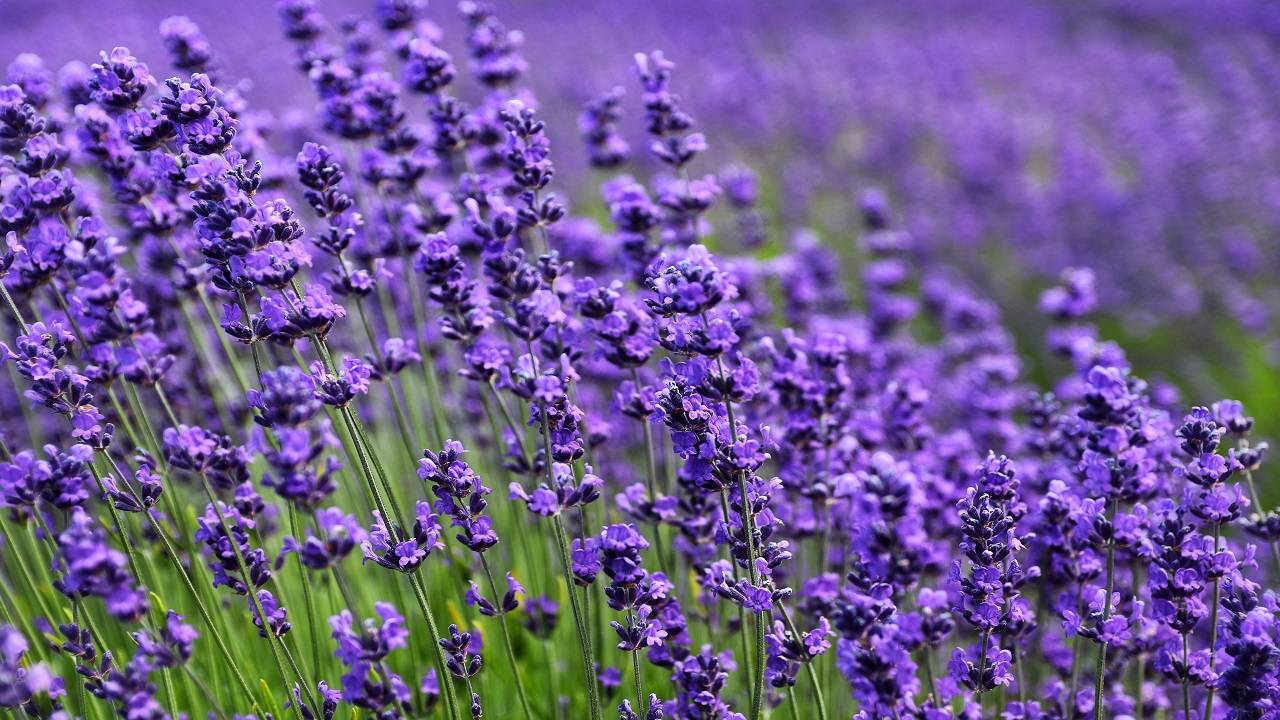
Kashmir is experiencing a transformative shift known as the "Purple Revolution," as farmers are gradually transitioning from traditional crops to the more lucrative cultivation of lavender, a purple-blossomed aromatic shrub.
Lavender farming has gained traction in various districts, including Anantnag, Budgam, Pulwama, Ganderbal, and Kupwara, aided by government support and assistance from local panchayats.
Lavender is primarily cultivated for oil extraction, which is used in the production of soaps, perfumes, cosmetics, room fresheners, and medicines, among other products.
One of the advantages of lavender farming is its minimal water requirements and low susceptibility to pests and other crop-destroying animals. A single lavender plant can bear flowers for up to 15 years, requiring minimal maintenance and yielding usable crops from the second year of plantation.
The introduction of lavender farming in Kashmir began in 2007 and has since expanded to all 20 districts of Jammu and Kashmir. Notably, districts such as Anantnag, Kathua, Doda, Ramban, Pulwama, Kishtwar, Udhampur, Rajouri, Srinagar, Kupwara, Bandipora, Budgam, Ganderbal, Kulgam, and Baramulla have made significant progress in this direction.
The "Aroma Mission," launched by the Council of Scientific and Industrial Research (CSIR) and the Indian Institute of Integrative Medicine under the Ministry of Science and Technology, has played a crucial role in promoting lavender farming.
Phase I of the Aroma Mission witnessed success, leading to the initiation of Phase II. This new phase aims to involve over 45,000 skilled individuals and benefit more than 75,000 families. The climate in Jammu and Kashmir is highly suitable for lavender cultivation, as the plant can withstand cold temperatures and moderate summers. As the region is already recognized as a hub for medicinal plants, lavender's therapeutic and aromatic properties make it a promising herb with the potential to positively impact India's economy and medical sector.
The demand for Kashmir's lavender has captured both domestic and international markets. With sustained demand and organized farming activities, lavender farming proves to be a profitable venture for farmers. The Indian government has taken significant steps to boost lavender production and export, further enhancing its potential.
The Purple Revolution, or Lavender Revolution, initiated by the Ministry of Science & Technology, aims to promote the indigenous aromatic crop-based agro economy through the CSIR's Aroma Mission. This mission intends to increase farmers' income and encourage commercial-scale lavender cultivation, with lavender oil being the primary commodity. Other popular products derived from lavender include medicines, soaps, incense sticks, and air fresheners.
Lavender cultivation proves cost-effective, generating immediate revenue. Jammu and Kashmir's climate is conducive to lavender farming, as the plant can thrive in both chilly winters and pleasant summers.
Additionally, lavender is a low-maintenance crop that can be utilized from its second year of plantation and continues to yield for fifteen years, making it a more profitable choice compared to traditional crops.
The field station of CSIR's Indian Institute of Integrative Medicine in Bonera has played a vital role in promoting and expanding lavender cultivation in Pulwama. Through dedicated efforts, this institute has empowered local laborers and revolutionized agricultural practices in the region.

Extensive research on lavender varieties suitable for Jammu and Kashmir's climatic conditions has been conducted, resulting in the development of robust and disease-resistant plants. The institute has also imparted advanced agricultural techniques and best practices, maximizing yield and optimizing the quality of lavender oil and other products. This knowledge transfer has enhanced productivity and empowered farmers with sustainable agriculture skills.
The director of the CSIR Indian Institute of Integrative Medicine expressed the aim of creating a lavender revolution in Jammu and Kashmir to transform farmers' lives and boost the economy. The success of lavender cultivation in Pulwama has attracted attention from other regions within the territory, where farmers and agricultural enthusiasts are eager to adopt lavender farming due to its profitability and ecological benefits.
With the continued efforts of CSIR's Indian Institute of Integrative Medicine and the dedication of local farmers and laborers, the lavender industry in Jammu and Kashmir is poised for remarkable growth. This collaborative endeavor not only diversifies the agricultural landscape but also establishes the region as a significant player in the lavender market.
The cultivation and production of lavender in Jammu and Kashmir have added a new dimension to the region's agricultural sector. The scenic beauty and diverse landscapes of Jammu and Kashmir, coupled with the sight of sprawling lavender fields in full bloom, have become major attractions for tourists and locals alike. Lavender's fragrance and beauty complement the natural charm of the region.
The lavender grown in Jammu and Kashmir is utilized for various purposes. The flowers are harvested and processed to extract essential oils, which find application in perfumes, soaps, candles, and other cosmetic and aromatic products. The lavender oil from Jammu and Kashmir is particularly known for its soothing properties and is frequently used in aromatherapy for relaxation and stress relief.
"Lavender, Jammu and Kashmir" refers to the cultivation and production of lavender in the Indian Union territory of Jammu and Kashmir. The region's favourable climate and soil conditions have paved the way for lavender farms, attracting tourists and contributing to the local economy. Lavender from Jammu and Kashmir is valued for its fragrance and finds application in various cosmetic and aromatic products. The successful implementation of lavender farming has brought economic benefits to local farmers and diversified the region's agricultural landscape, creating new opportunities and employment prospects.
















